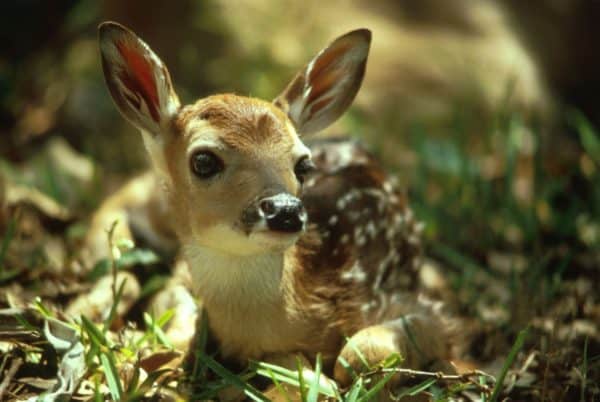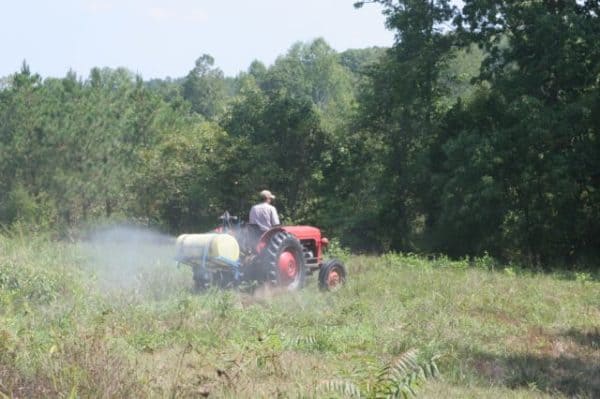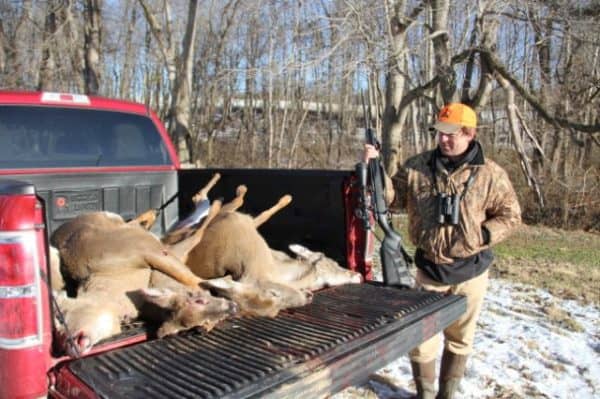by David Hart
It’s true. Nature is cruel, particularly for the young, and especially for deer fawns.

Newborn fawns are vulnerable, particularly to predators like coyotes.
Disease, accidents, predators and poor nutrition all take their toll on the wild animals that roam the landscape. These days, it’s even crueler for whitetail fawns. As coyotes expand their range and numbers, the chance of fawns making it to adulthood in some regions has dropped significantly. Recent research conducted in the southeast has shown that coyotes can eat 70 percent or more of a new fawn crop. It’s no wonder many hunters are seeing fewer deer these days.
Shoot A Coyote, Save A Fawn?
Which leads to the question, should we shoot coyotes? For many hunters, the answer is a resounding “yes.” Any coyote removed from the landscape is one less fawn killer.
“It’s not that simple,” says Joseph Jones Ecological Center research scientist Dr. Mike Conner. “Random predator removal likely has little or no noticeable impact on fawn survival. Coyotes are highly mobile and immigration of neighboring animals becomes important. Removal of a resident opens up the area for a neighbor, which can fill the void very quickly. This happens much faster than many people realize, days or weeks, not months or years.”
Coyote removal can help if it is timed right. Biologists with the University of Georgia found that fawn survival can improve if a large number of coyotes are removed from the landscape in the weeks leading up to the fawning season. The problem, admits wildlife professor Dr. Karl Miller, is that coyotes can be difficult to kill.
“Trapping is the most effective way to remove coyotes,” he says, “but not many people have the skills necessary to catch them in high enough numbers to have an impact.”
Those studies that have shown a positive impact on fawn success have included the services of professional, full-time trappers who are getting paid for their efforts.
Better Habitat
The best way to help your spring fawn crop isn’t to take a few weeks off from work to run a trap line, it’s to provide them with suitable cover and high-quality food. The good news is that both can be created at the same time, and it can be done over an extended period. Be warned, though. New research has found that even the best fawn bedding cover won’t protect them from predation. Coyotes seem to find them, no matter where they are. Although research related to fawn predation and available bedding cover found that fawns are equally vulnerable in all types of habitat, Quality Deer Management Association outreach coordinator Kip Adams says any advantage you can give your fawns will benefit them.

Habitat improvements, including ridding your fields of non-native plants and cool-season grasses, can increase the available food, which leads to healthier does and more fawns.
“Any time you provide more food and better habitat, you give all deer a higher chance of survival,” says Adams. “Creating habitat diversity also increases the abundance and diversity of other wildlife, which gives coyotes alternative food sources.”
Food plots can help, but the ideal solution is to improve all the available habitat, including the fields and forests. A food plot doesn’t provide cover for much of anything, and it often doesn’t provide food all year.
One of the best things you can do is thin a stand of mature timber, says Adams. Removing some large trees allows sunlight to reach the forest floor, which creates a rapid growth of new, young plants that deer devour. That new growth also evolves into a jungle-thick tangle of young trees, vines and shrubs that provide high-quality bedding cover for deer and a variety of other game and non-game wildlife.
Killing non-native, cool-season grasses — tall fescue in particular — frees up more space for the good native foods deer eat in your fields, too.
What’s more, notes Adams, high-quality habitat helps the female deer increase the number of fawns they can bear. In the best habitat, that can be up to three fawns. Females in poor habitat often only have one.
“More fawns born now can mean more adult deer later,” he adds.
Shoot Fewer Does

Liberal antlerless harvest limits allow hunters to shoot lots of does, but that doesn’t mean you have to. If you are seeing fewer fawns, it might be a good idea to shoot fewer does.
Flooding the landscape with fawns may be the best bet for keeping your deer population at an optimum level, but there’s only one realistic way to do that: Shoot fewer does. Many state wildlife agencies are attempting to do that through tighter restrictions and bag limits on antlerless harvests, thanks in part to increases in coyote numbers.
Remember, you don’t have to shoot all the does you legally can. If you are seeing fewer fawns on your trail cameras or fewer deer of all ages, practice trigger management.
Let more does walk so you can have more fawns now and more deer later.
The Union Sportsmen’s Alliance website is designed to provide valuable articles about hunting, fishing and conservation for members of AFL-CIO affiliated labor unions and all sportsmen and sportswomen who appreciate hunting and fishing and want to preserve our outdoor heritage for future generations. If you would like your own story and experience from the outdoors to be considered for our website, please email us at USAmembers@unionsportsmen.org.



